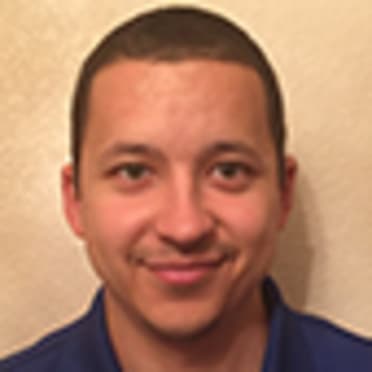MLB testing 'robot umps' at AFL games
Arizona Fall League experiments with automated ball-strike system
SCOTTSDALE, Ariz. -- The Arizona Fall League has long been a laboratory of sorts for Major League Baseball. Over the years, initiatives like instant replay, pitch clocks, starting extra innings with a runner at second base, different foul poles and baseballs have been experimented with in the AFL. Some have been incorporated into Major League games, others have not.
This year’s biggest experiment is the use of the automated ball-strike system (ABS). The “robot umpire” will be in use at all games at Salt River Fields, which is the home for the Salt River Rafters and Scottsdale Scorpions this season. It was utilized for the Rafters’ first two games on Wednesday and Thursday and the Scorpions’ first game at the venue on Friday.
“We are continuing to test the automated ball-strike system in the Arizona Fall League, which will be a valuable opportunity to solicit feedback from umpires, players and coaches,” said senior vice president of league economics and operations Morgan Sword, who was in Scottsdale to watch the launch of the system at the start of AFL play.
The system has also been used in the independent Atlantic League this season as part of a partnership with Major League Baseball. Here’s how it works:
The pitch tracking system at Salt River Fields reads the pitch, then software determines whether the pitch crossed through any part of the strike zone, which automatically adjusts to the height of each player. A “ball” or “strike” audio signal is transmitted to the home-plate umpire, who wears a receiver on his belt and an earpiece. The first two games, the system was up and working largely as expected.
“The main thing is, you want to get the call right, and I think eventually they will, based upon who is hitting and the heights of each player and their stances,” Salt River pitching coach Jim Paduch said. “The main thing is just getting the call right.”
Players will have to adjust their understanding of what is and is not a strike in the new system. There are several examples of pitches that might not be called as a strike by a human umpire, but will by ABS. For instance, when the catcher sets up inside, but reaches across his body to catch an outside pitch that catches the corner, ABS will still be able to identify that as a strike.
While everyone seems to agree that pitches on the corners have been called well, there’s been a bit of a learning curve at the top and bottom of the strike zone.
“It’s been pretty strict on the corners away and in, and that hasn’t surprised me at all,” Rockies catching prospect Brian Serven said. “Some of the pitches that are up and some that are down, curveballs that are clipping the bottom of the zone … it’s telling the truth, a strike’s a strike, but it’s been interesting.”
The ABS, which takes the human element out of “strike” and “ball” calls, also reduces the impact of framing and receiving.
While this should make the game fairer as catchers can no longer steals strikes, some hitters -- although they can get punished from a well-framed pitch -- enjoy that element of the competition.
“It kind of changes the whole game,” said Royce Lewis, who is ranked the Twins' No. 1 prospect, according to MLB Pipeline. “It’s still tough, but anyone can catch it back there with electronic. I’d rather have the guys that are working hard and framing and building an element of their game to better themselves.”
Pitchers have also noticed a change in the way pitches are called, especially on pitches with late life or a sharp break.
“There have been some pitches where our catcher will make a comment to the umpire like, ‘I think that was a strike’ and even the umpire will agree,” Rockies prospect Ashton Goudeau, who fired three perfect innings on Thursday, said. “It’s definitely different to see what the umpire thinks is a strike and what actually is a strike.”
It would have been naive to think the ABS system would be instituted flawlessly, which is why the Fall League is such a vital testing ground for Major League Baseball.
“The AFL should be the place Major League Baseball tries things like this,” said MLB senior director of baseball and softball development Bill Bavasi, who oversees the operation of the AFL. “Baseball’s best personnel, physically and intellectually, can be found in this league. We will always be happy to help with projects like this.”
While there are certainly some bugs to iron out, overall the goal is to make the strike zone more consistent, and that’s ultimately something everyone seems to agree on.
“It’s very fair,” Goudeau said. “It’s fair for both sides, it’s very consistent. … It’s definitely been consistent. That’s what everyone’s been talking about.”

